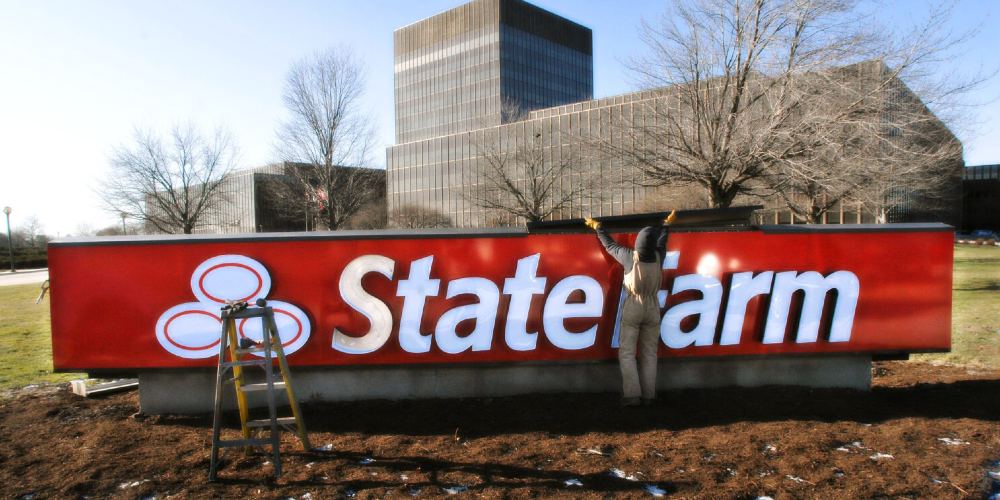Editor’s Commentary: State Farm, the nation’s largest property insurer by volume, is pulling out of California. They will not be selling property insurance in the state anymore for a lot of obvious reasons including rising costs that are outpacing inflation, rampant crime, surging homelessness, the illegal alien invasion, and overall horrible policies from the Democrat-run government.
But as one might expect, the primary culprit cited by most corporate media sources I’ve read point to one major issue: climate change. Why? Because climate change is supposedly the root cause of literally every single possible negative event that has happened, is happening, or will happen… at least in the minds of the indoctrinated cultists.
Below is an article with all the details. As a quick note, I will avoid whenever possible linking to corporate media news sources. While they have the resources to cover national and world news, linking to their articles aids in giving them credibility that they do not deserve. Instead, I will be generating generic reporting that states the facts whenever possible. Here’s the article generated from a corporate media source:
State Farm General Insurance Company has made an announcement stating that it will no longer accept new applications for business and personal lines of property and casualty insurance. The decision comes as a result of significant increases in construction costs surpassing inflation, a rising exposure to catastrophic events, and a challenging reinsurance market, as explained in the company’s press release on Friday.
It is important to note that existing policyholders of home insurance will not be affected by this change, and new applications for personal auto insurance will still be accepted, according to the Wall Street Journal.
State Farm, which is one of California’s largest insurers, holds the position of the nation’s largest home insurer in terms of premium volume, as reported by the same source.
In its statement, State Farm acknowledges the efforts made by Governor Newsom’s administration, legislators, and California’s Department of Insurance in mitigating wildfire losses. The company expresses its commitment to collaborating with the CDI (California Department of Insurance) to help enhance market capacity.
The decision to halt new applications is primarily aimed at improving the financial strength of the Fortune 500 insurance giant.
Michael Soller, the deputy insurance commissioner for Northern California, cited climate change as one of the factors influencing State Farm’s choice. He emphasizes that the reasons behind the decision, such as climate change, escalating reinsurance costs affecting the entire insurance industry, and global inflation, are beyond their control. Soller underlines the significant wildfire risk in California as a fundamental contributor to the state’s insurance challenges.
Soller highlights various wildfire loss mitigation efforts undertaken by the governor, lawmakers, and insurance regulators, including the provision of community fire-prevention grants and the establishment of fire breaks. Additionally, he reveals that California has initiated an insurance discount program that takes into account consumers’ endeavors to mitigate wildfire risks.
California faces some of the highest housing costs in the nation, which have exacerbated the state’s homelessness crisis, according to Fox Business. KUSI reports that over the past five years, the state has allocated $20 billion toward addressing this issue. However, despite substantial taxpayer investments, the problem continues to worsen.
State Senate Minority Leader Brian Jones (R) suggests that a solution exists and points to Texas as an example. During his visit to Houston, he observed a lack of large tent encampments and a minimal number of panhandlers, unlike in California. Jones highlights Texas’s enforcement of laws related to drug crimes, petty theft, and sexual assault, as well as their prohibition of tent encampments. He emphasizes the need to address the challenge of homelessness in a compassionate manner while acknowledging the importance of maintaining proper conditions on the streets.
Overall, State Farm’s decision to cease accepting new applications for certain insurance lines reflects its efforts to address the financial challenges posed by rising construction costs, increased catastrophe exposure, and a difficult reinsurance market. The company will continue to support existing policyholders while working with regulatory bodies to strengthen the insurance market. The impact of climate change and California’s wildfire risks are significant factors influencing the insurance landscape, and the state continues to grapple with high housing costs and a growing homelessness crisis.








